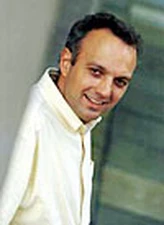Andy Jackson

The 2007 Petrus Peregrinus Medal is awarded to Andy Jackson for his outstanding contributions to the study and knowledge of the historical secular variation of the geomagnetic field.
Andy’s tour de force, which was recently completed, on compiling historical field observations for the last 400 years is without question the most thorough and complete compilation of these valuable data. This painstaking study is of incalculable importance and supercedes all such previous efforts: it will still be cited hundreds of years from now. How many of us are likely to ever write a paper for which that claim can be made? In terms of service to the community this is work of the very highest order – on the basis of this work alone he would be a more than fitting nominee for this award.
However, he has done so much more. His 2003 papers in Nature and Science have highlighted the importance of equatorial regions in understanding the secular variation. In the first of these he discusses the morphology of the field in that region; in the second (with Chris Finlay, a graduate student), he shows that the changes in the field there are dominated by a single wavenumber. The approach taken here is a good one, one which moves beyond simply producing maps of fluid flow to the analysis of particular physical processes in the core.
I also rate highly his work on applying maximum entropy methods to the problem of mapping the magnetic field at the core-mantle boundary. Using surface observations to map the field at the core-mantle boundary is not straightforward. Even though the community (or at least most of the community) moved beyond spherical harmonic truncation to regularized inversions 20 years ago, there are still serious shortcomings to regularized inversions. Of particular concern is the effect of the smoothing norms on the amplitude of the maps as the data availability varies. Put simply, the tops of the hills get lopped-off, and the valleys get filled-in. Andy’s new technique appears to alleviate many of these difficulties. I suspect that this work will be very influential in the coming years.
In summary, Andy Jackson would be a superb recipient of this award. His work is insightful, of broad scope, and great significance.
